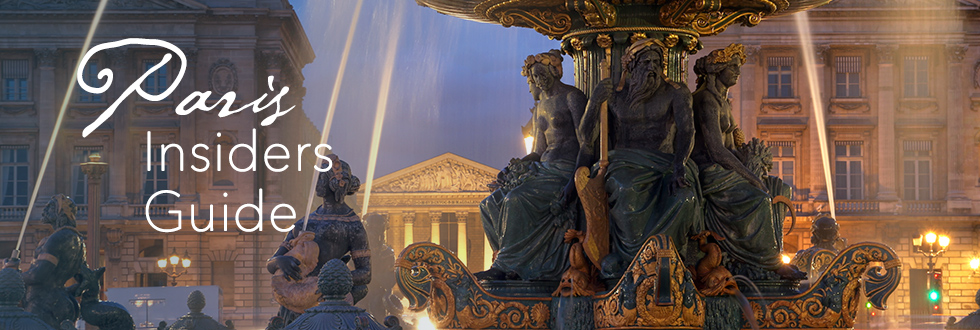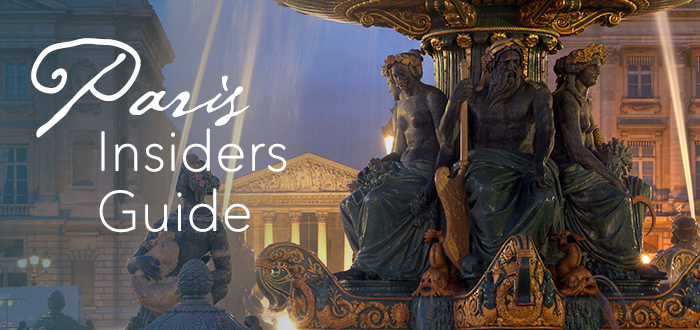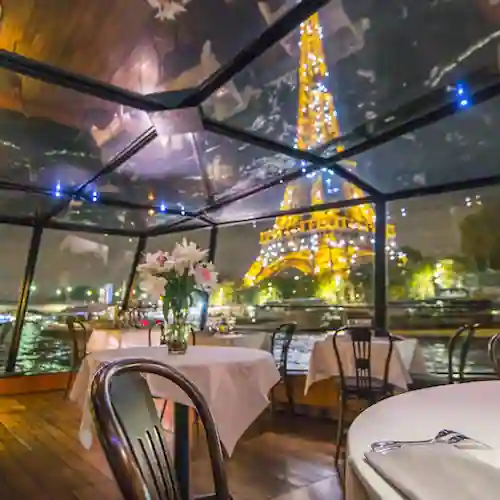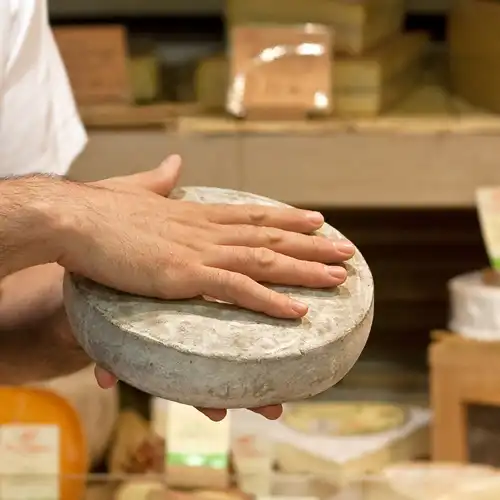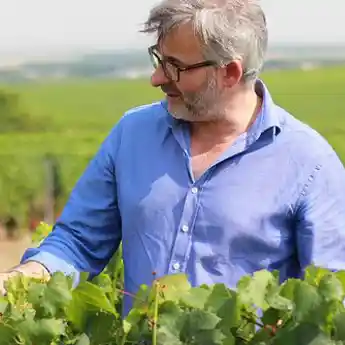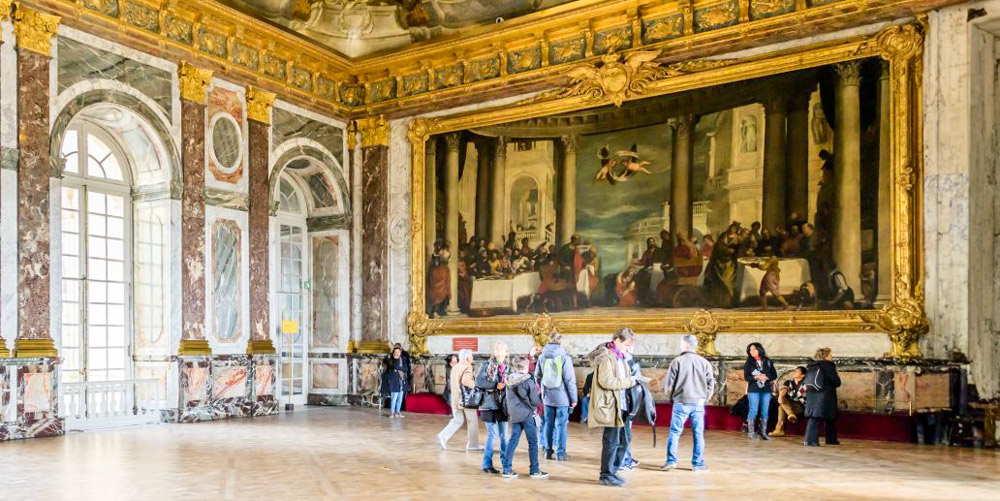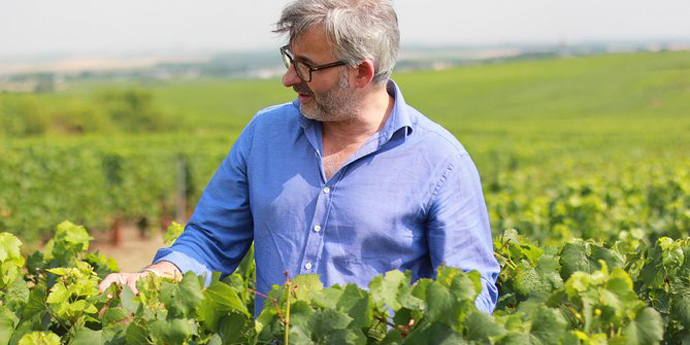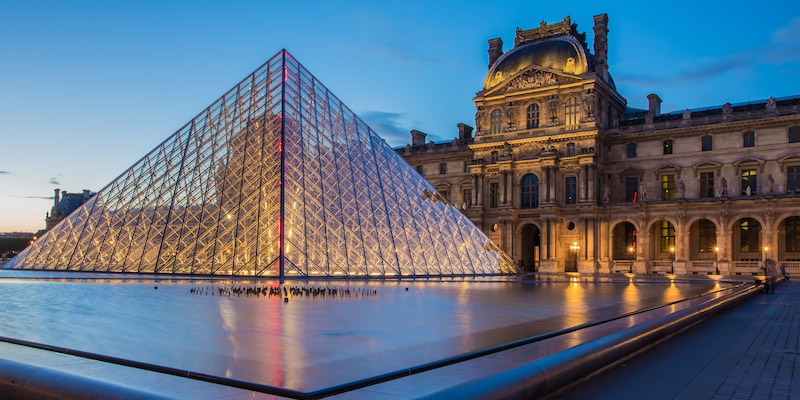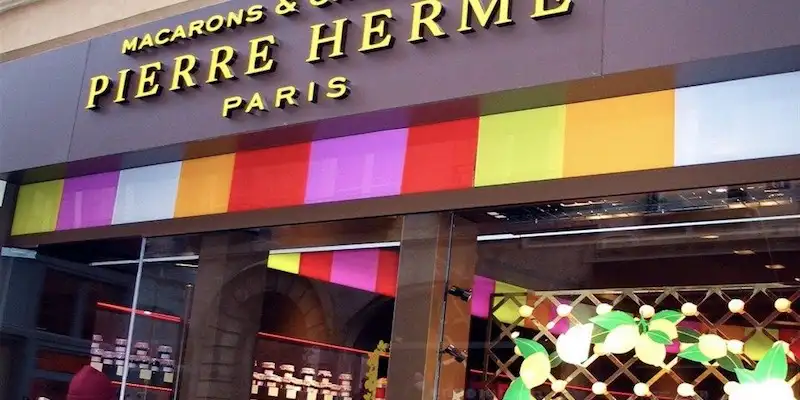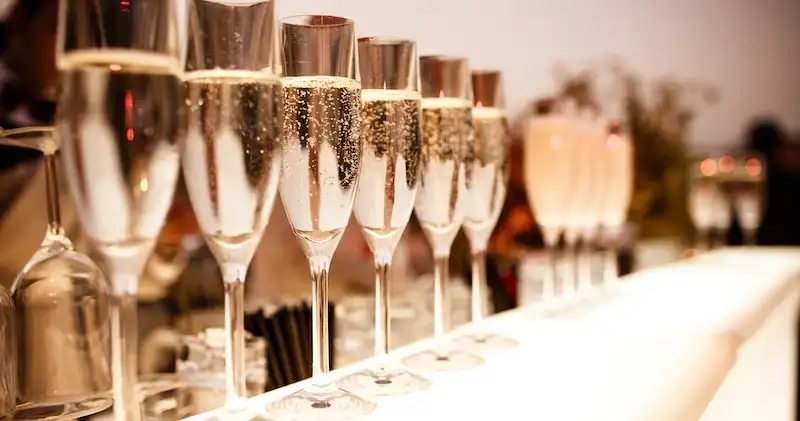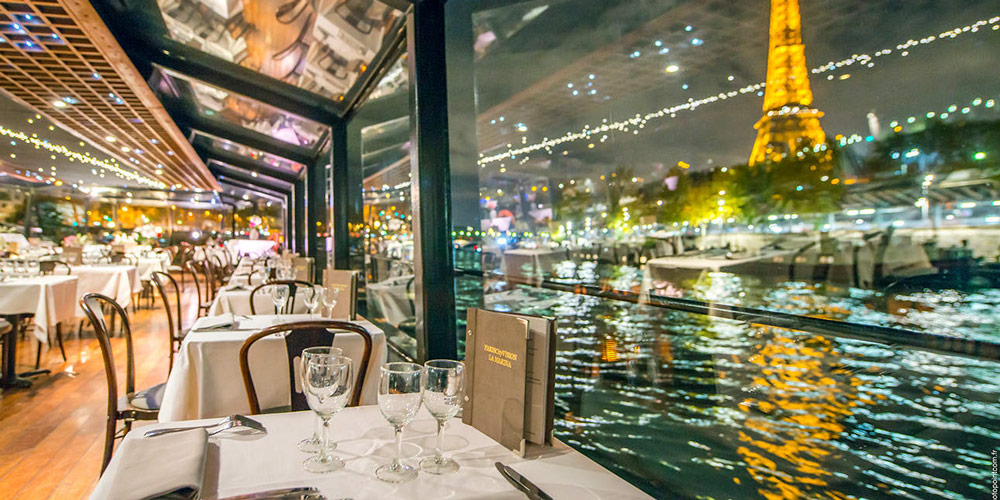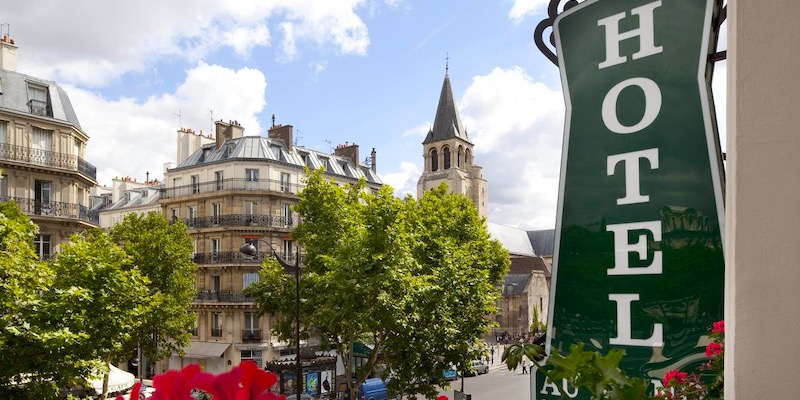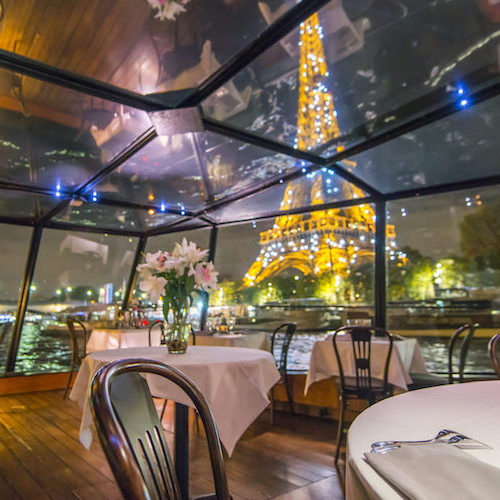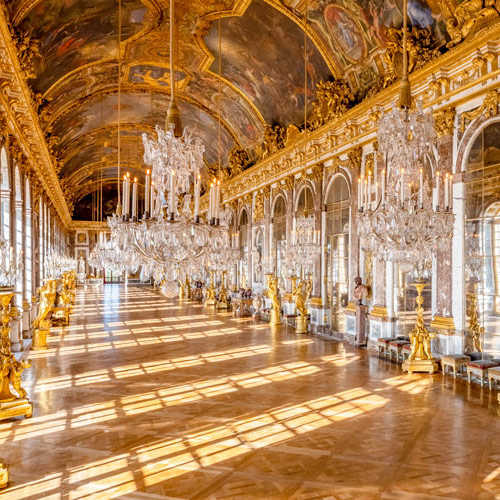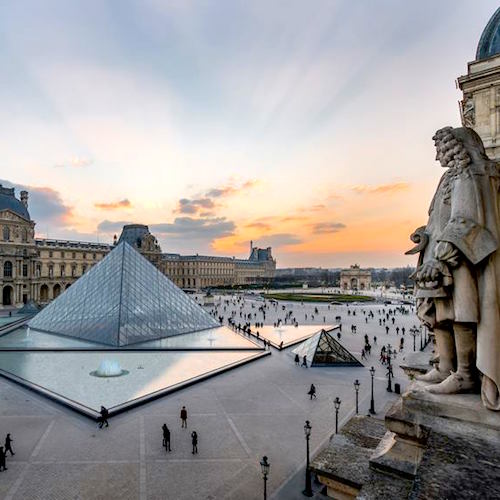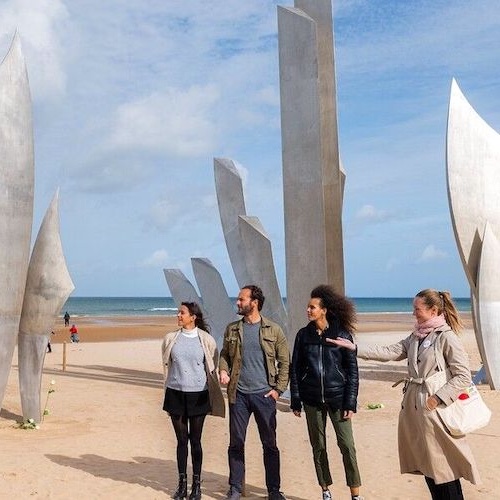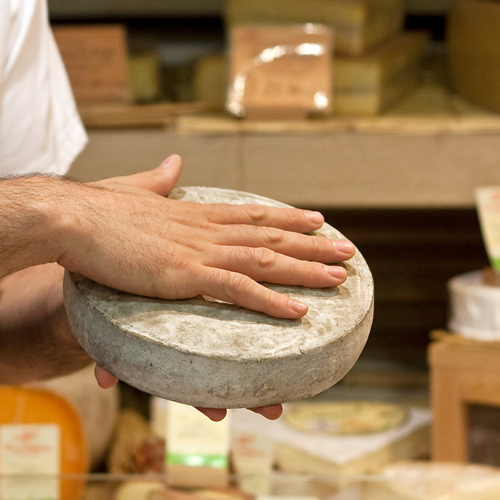The Most Popular Food in Paris – What to Eat Now
Paris is a city where food isn't just fuel; it's a way of life. You can't walk a block without encountering a boulangerie perfumed with fresh bread, a fromagerie stacked with wedges of something gloriously pungent, or a cafe where Parisians linger over meals like it's a competitive sport.
The most popular food in Paris ranges from flaky pastries to rich, buttery sauces — each dish a small but essential part of the city's identity. If you're not eating your way through Paris, you're doing it wrong.
![]()
Discover What's On When You're Here...
• January... |
• February... |
• March... |
• April... |
• May... |
• June... |
• July... |
• August... |
• September... |
• October... |
• November... |
• December... |
Discover What's On When You're Here
• January...
|
• February... |
• March... |
|---|---|---|
• April... |
• May... |
• June... |
• July... |
• August... |
• September... |
• October... |
• November... |
• December... |
Paris Food & Wine Activities
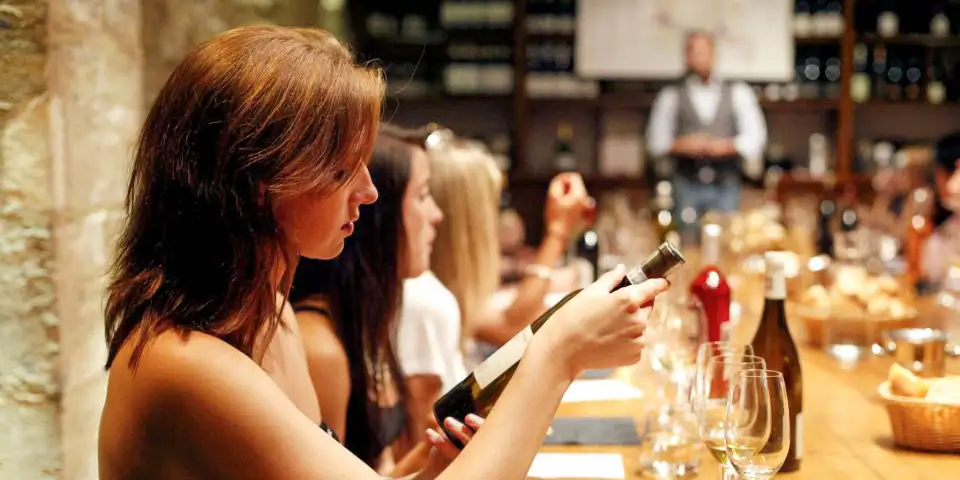 A wine tasting in a Paris wine cellar, photo O Chateau
A wine tasting in a Paris wine cellar, photo O Chateau
Food is central to Parisian life, and it should be to your visit as well. Eating your way through the city is only the beginning — why not roll up your sleeves and get involved? Sign up for a hands-on experience, whether it's baking baguettes in a charming kitchen, pairing wine with cheese like a pro, or trawling the city's best markets with an expert guide.
To make things easier, we've rounded up the top food and wine activities in Paris. They book up fast, so plan ahead unless you want to be staring longingly through a bakery window while someone else gets the last warm croissant. These hands-on experiences are the perfect way to dive into the city's vibrant food scene.
![]()
A Taste of Rue Cler
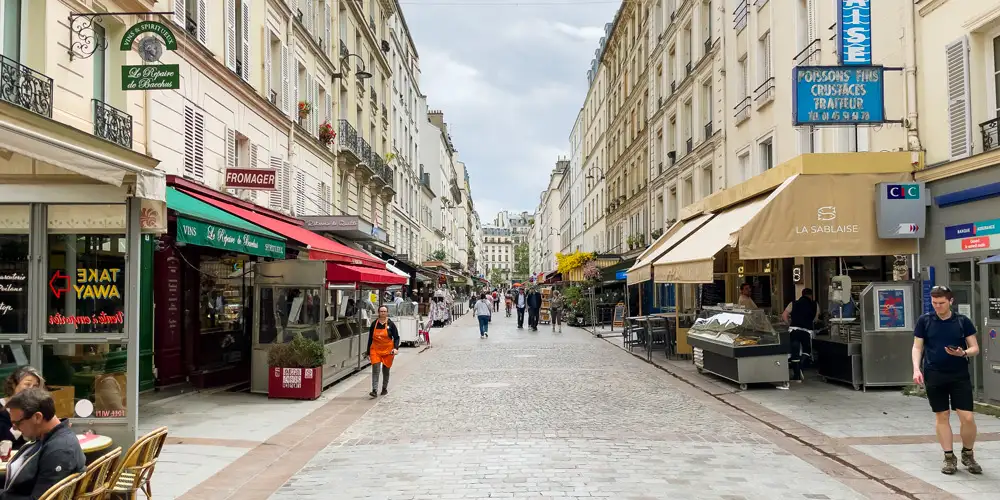 The cobblestone streets and the shops of Rue Cler, photo by Mark Craft
The cobblestone streets and the shops of Rue Cler, photo by Mark Craft
On a cobblestone street in the 7th arrondissement, you'll find one of Paris's most satisfying small pleasures: Rue Cler. This Paris Left Bank market street offers everything from glistening fruit stands to perfectly plated duck confit. The pedestrian street hums with local life and cafe clatter, just steps from the Eiffel Tower.
In our Rue Cler Paris market street guide, we walk you through the vendors, the dining, and the unbeatable ambiance of this beloved street. Bring your appetite.
La Grande Epicerie de Paris
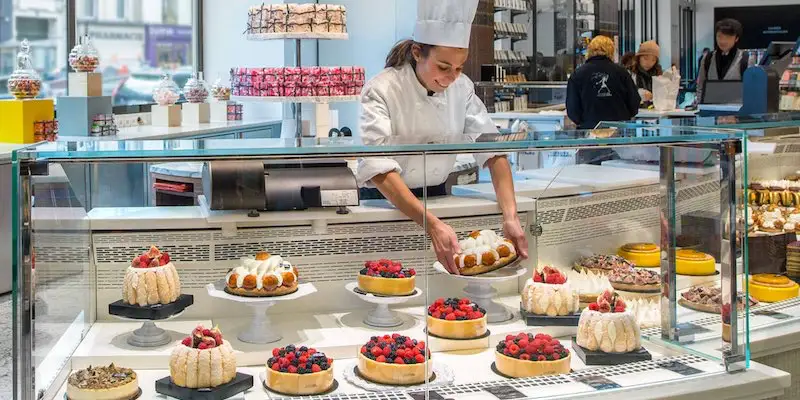 Patisserie at La Grande Epicerie de Paris
Patisserie at La Grande Epicerie de Paris
La Grande Epicerie de Paris isn't just a grocery store — it's Paris showing off. Think 30,000 food products lined up like jewels, from golden baguettes pulled hot from the oven to tins of olive oil gleaming like art pieces. Locals come for their weekly shopping; visitors come for the thrill of wandering a Paris gourmet food hall that feels more like theater than retail.
It's also the perfect stop for edible souvenirs or a picnic kit: a wedge of brie, a crusty baguette, and a bottle of wine can be gathered in minutes. With on-site kitchens, a wine bar, and entire aisles devoted to global delicacies, this Paris luxury grocery store delivers both spectacle and substance — a must for anyone chasing a true Paris authentic culinary experience.
![]()
|
Trade Paris bustle for royal grandeur on a guided Versailles tour. Skip the lines, wander the gardens, and peek inside Marie Antoinette’s private estate. History never looked this good. |
|
Trade Paris bustle for royal grandeur on a guided Versailles tour. Skip the lines, wander the gardens, and peek inside Marie Antoinette’s private estate. History never looked this good. |
The 10 Best Pastries to Savor in Paris
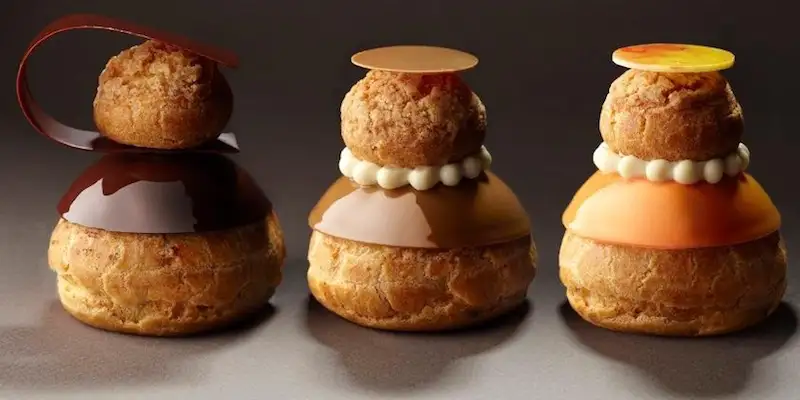 3 luscious pastries from master chef Cyril Lignac, photo Cyril Lignac
3 luscious pastries from master chef Cyril Lignac, photo Cyril Lignac
Paris takes its pastries very, very seriously. A flaky croissant or a pain au chocolat is just the beginning. The city's pastry chefs treat sugar and butter like an artist treats paint — creating edible masterpieces like the airy, praline-filled Paris-Brest or the caramelized layers of a perfectly executed mille-feuille.
Need guidance? We've compiled a list of the ten best pastries in Paris. Try them all, and if you need an excuse, just say it's for research. It's what we do.
The Food Markets of Paris
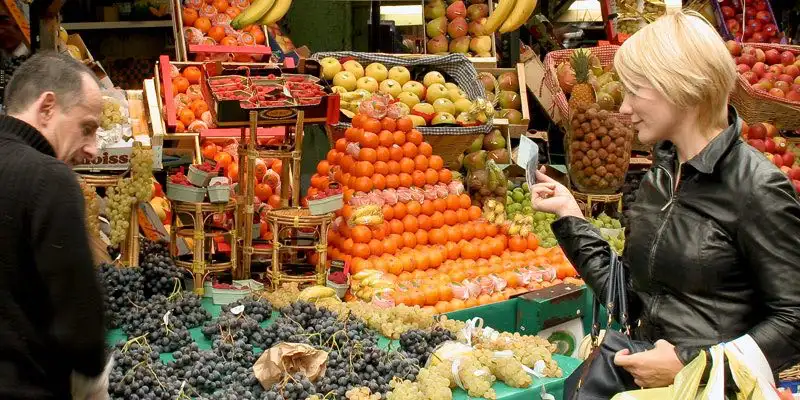 Shopping at the Market on Rue Poncelet, photo by Mark Craft
Shopping at the Market on Rue Poncelet, photo by Mark Craft
Paris food markets are where chefs, grandmothers, and in-the-know visitors go to stock up on the freshest ingredients. The city has everything from sprawling open-air markets to historic covered halls, each one offering a feast for the senses. The tradition of food markets in France dates back to ancient times, and today they remain a cornerstone of French culinary life.
Our visitor's guide takes you through the best markets in Paris, explaining what to buy, when to go, and how to shop like a local (hint: don't touch the produce unless invited). Markets offer the freshest, most vibrant produce and products, showcasing the very best of French fare. Ready to take on the ultimate food lover's scavenger hunt? Let's go.
Bread Winners – The Best Baguettes in Paris
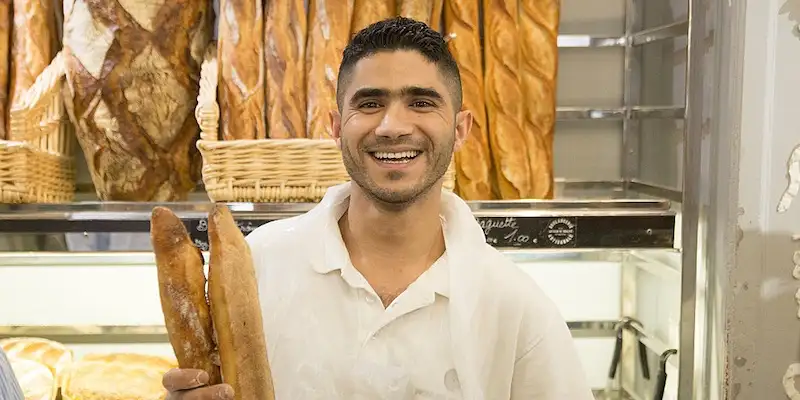 A recent winner of The Best Baguette in Paris, photo Ville de Paris
A recent winner of The Best Baguette in Paris, photo Ville de Paris
The baguette is more than bread in Paris — it's a cultural institution. Every year, the city's best bakers battle for the Grand Prix de la Baguette, with the winner earning the honor of supplying the Élysée Palace, home to the French president. But really, the best baguette is the one that's still warm from the oven, tucked under your arm as you wander the streets of Paris.
Where should you go for the best baguettes in Paris? We've got the lowdown on the bakeries that consistently turn out the best loaves, from crispy, golden-crusted perfection to rustic sourdough that's worth crossing town for.
![]()
|
Browse our hand-picked Paris hotel deals with real-time discounts of up to 20%. Stay in the Marais, Saint Germain, the Latin Quarter, the Left Bank near the Eiffel Tower… every arrondissement is on the list. |
|
Browse our hand-picked Paris hotel deals with real-time discounts of up to 20%. Stay in the Marais, Saint Germain, the Latin Quarter, the Left Bank near the Eiffel Tower… every arrondissement is on the list. |
The 10 Top Cheeses Of France
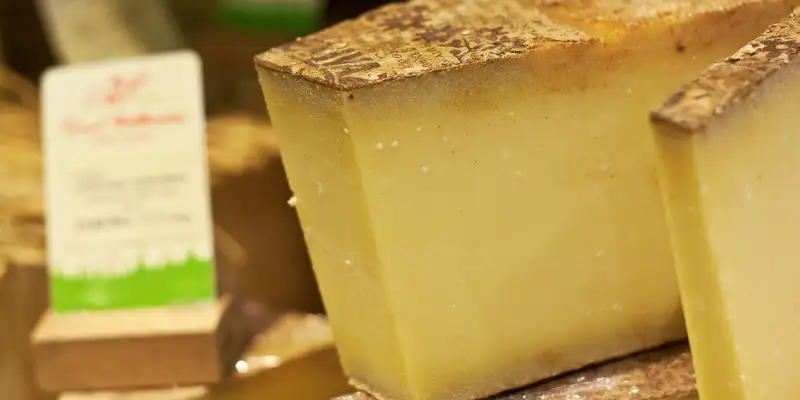 Chunks of Comte overflow on a cheese counter, photo by Mark Craft
Chunks of Comte overflow on a cheese counter, photo by Mark Craft
With more than 1,200 varieties of cheese — and at least 56 proudly wearing the prestigious AOC label — French cheese is a world unto itself. There's a reason Charles de Gaulle famously complained about trying to govern a country with so many varieties. Paris is the perfect place to taste most of them, with fromageries stocked with everything from creamy brie to the famously funky Époisses.
Our guide breaks out the top ten French cheeses you need to try while in Paris. Whether you like your cheese mild, nutty, or aggressively barnyardy, there's one for you. Just don't ask for it to be served cold — this is Paris, not a supermarket dairy aisle.
The 10 Best Cheese Shops In Paris
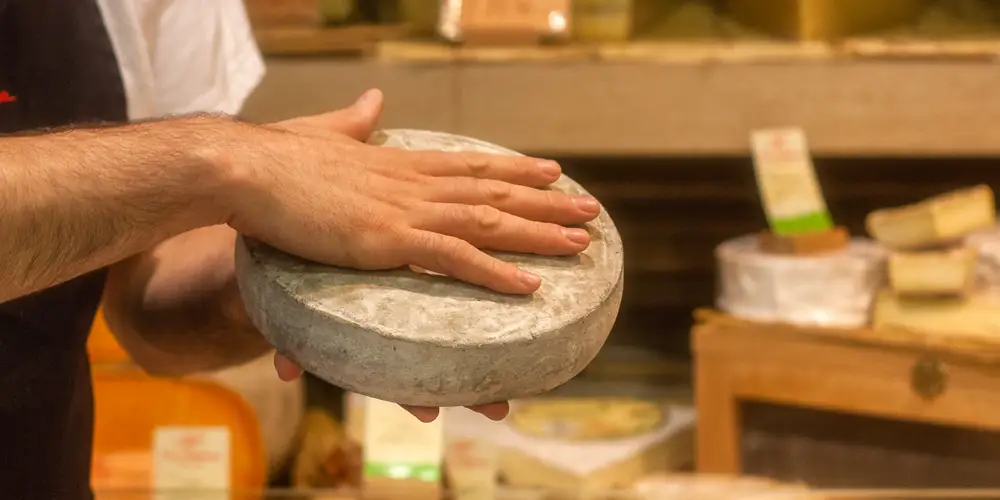 A cheese seller displays a round of cheese, photo by Mark Craft
A cheese seller displays a round of cheese, photo by Mark Craft
Now that you're in the know about France's finest cheeses, the next step is finding them! Thankfully, Paris is home to hundreds of dedicated fromageries, and we've handpicked the top ten cheese shops you won't want to miss. Each one is a treasure trove of France's best cheeses, offering quality and expertise you won't find just anywhere.
Is cheese the most popular food in Paris? Find out for yourself. By the way, most of them are run by women. No surprise there, really.
A Taste of Tradition at the Musée du Fromage
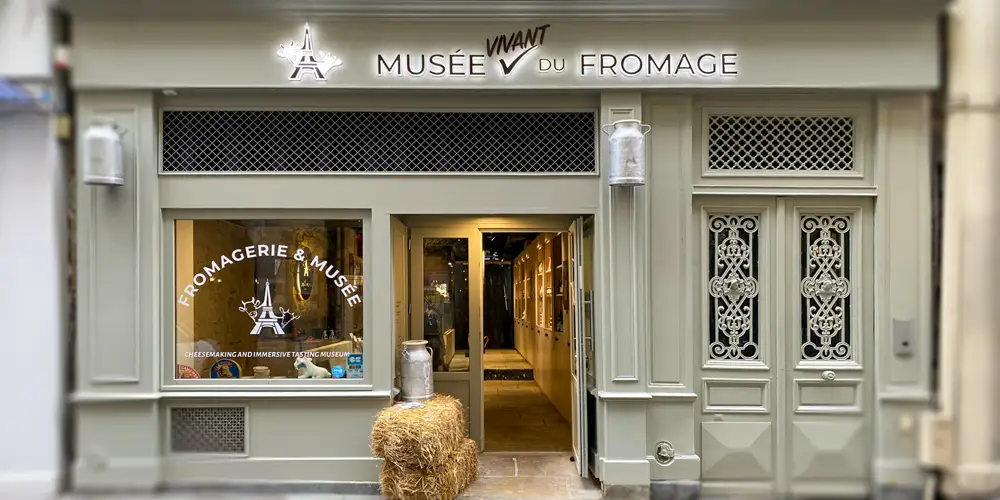 Musée du Fromage storefront, with a hay bail by the door, photo Musée du Fromage
Musée du Fromage storefront, with a hay bail by the door, photo Musée du Fromage
Paris has no shortage of culinary wonders, and now cheese lovers have a dedicated space to celebrate France's most cherished dairy delight. The Musée du Fromage on Île Saint-Louis, takes visitors on a journey through the history, craftsmanship, and flavors of French cheese.
With interactive exhibits, live cheesemaking demonstrations, and expertly guided tastings, it's an experience that engages all the senses. Whether you're a connoisseur or simply curious, the Paris Cheese Museum is a must-visit for anyone who appreciates the art of a well-aged wheel of Comté or a perfectly ripened Camembert.
![]()
|
Escape to the Land of Bubbly on a small-group day tour from Paris. Taste at top Champagne houses, meet boutique producers, enjoy a leisurely lunch, and toast to a perfectly sparkling day. |
|
Escape to the Land of Bubbly on a small-group day tour from Paris. Taste at top Champagne houses, meet boutique producers, enjoy a leisurely lunch, and toast to a perfectly sparkling day. |
Guide to Paris Gourmet Food Stores
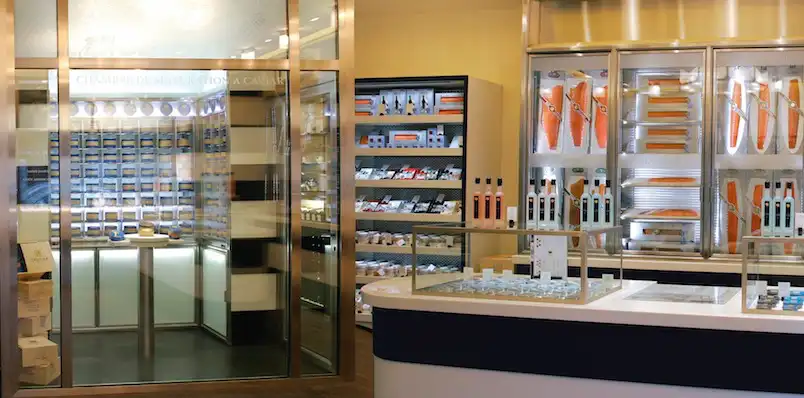 Caviar and salmon on display at Prunier in Paris
Caviar and salmon on display at Prunier in Paris
Caviar, foie gras, oysters, cheese, champagne, truffles — for many visitors to Paris, these French food specialties exert an irresistible pull to the City of Light. Paris isn't just about bistros and cafes — it's also home to some of the best gourmet food stores in the world. These temples of indulgence offer everything from buttery foie gras to delicate tins of caviar, not to mention a Champagne selection that'll make you want to celebrate every meal.
To get the biggest bite of French gourmet food, we've got your guide to the best gourmet food stores in Paris. Bring an appetite — and maybe an extra suitcase.
Eat Drink Paris – Top Parisian Culinary Tips
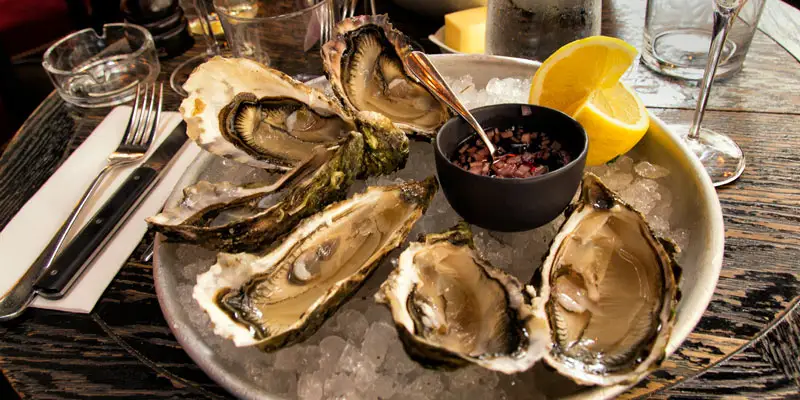 Oysters on a plate in Parisian restaurant L'Escargot, photo by Mark Craft
Oysters on a plate in Parisian restaurant L'Escargot, photo by Mark Craft
Paris isn't just a city — it's a lifestyle, and food is at the center of it all. Whether you're navigating a crowded boulangerie, deciphering a restaurant menu, or trying to blend in at a wine bar, a little insider knowledge goes a long way.
We've put together our top tips for eating and drinking like a Parisian. From knowing when (and when not) to order a café crème to understanding why your waiter isn't ignoring you (promise), this guide will help you enjoy Parisian food culture to the fullest.
![]()
|
Skip the long lines and dive into the Louvre’s greatest hits — the Mona Lisa, Venus de Milo, and more — on a guided tour that shows you the treasures without the museum overload. |
|
Skip the long lines and dive into the Louvre’s greatest hits — the Mona Lisa, Venus de Milo, and more — on a guided tour that shows you the treasures without the museum overload. |
Top Chocolatiers of Paris
In Paris, chocolate is afforded the same kind of interest and respect as wine and cheeses. It's a gourmet speciality with a cadre of expert chocolatiers who have shops throughout the city. Let's go on a virtual tour of five of the most interesting — and most delicious — chocolate shops in the city.
Good Champagne Stops In Paris
One of our favorite hobbies in Paris is to discover new settings to enjoy a glass of good champagne. And that's not hard to do since champagne is served everywhere — bars, bistros, parks, rooftops, and even on top of the Eiffel Tower ! Let us take you on a virtual bubbly tour.
9 Foods Not To Miss At Your Local Epicerie
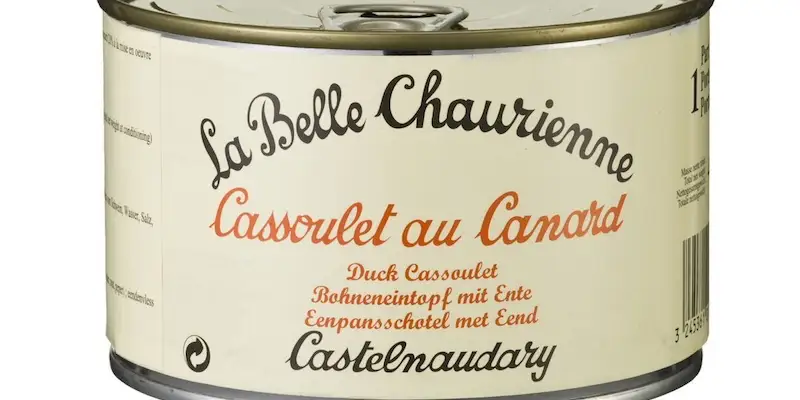 Yumm, a can of Cassoulet au Canard at a favorite Parisian épicerie
Yumm, a can of Cassoulet au Canard at a favorite Parisian épicerie
Parisian épiceries (small grocery stores) are tiny but mighty, stocked with gourmet essentials that locals grab daily. These aren't merely your standard grocery stores, they offer up the most popular food in Paris — think jars of velvety duck confit, tins of sardines so pretty they belong in a museum, and vintage bottles of wine at shockingly reasonable prices.
We've rounded up nine must-try foods you can find at your local Parisian épicerie. Some are classics, some are surprises, but all are worth stuffing into your suitcase (or eating immediately).
![]()
|
Paris Dinner Cruises on the Seine Dine in style as you glide past the Eiffel Tower, Notre-Dame, and the Louvre on a magical Seine River cruise. Gourmet food, champagne, and Paris lit up at night – it’s unforgettable. |
|
Paris Dinner Cruises on the Seine Dine in style as you glide past the Eiffel Tower, Notre-Dame, and the Louvre on a magical Seine River cruise. Gourmet food, champagne, and Paris lit up at night – it’s unforgettable. |
Scoop Up the Best Paris Ice Cream in Paris
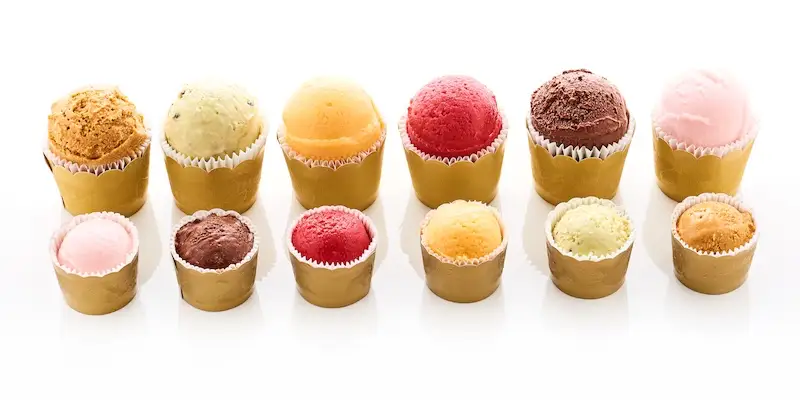 12 cups of ice cream in various colors, photo Fabien Foenix
12 cups of ice cream in various colors, photo Fabien Foenix
In Paris ice cream isn't some gaudy-colored industrial product. It's made with the same skill and care and attention to flavors that goes into all the best French foods. Follow us to discover where to scoop up the best ice cream on the Right Bank and on the Left Bank and even on the Paris islands.
The Most Popular Food In Paris
If there's one truth about French food, it's that the best of it migrates to Paris. A bowl of steaming onion soup, a crisp croissant that shatters upon impact, or a cheese so fragrant it practically introduces itself — all of it finds its way to the capital. Your mission? To taste as much as possible of the most popular food in Paris. Consider it your civic duty.
Paris is a feast, and the most popular food in Paris is waiting. Whether it's a wedge of camembert, a crispy galette, or a perfectly caramelized crème brûlée, every meal here is a reminder that in Paris, food isn't just something you eat — it's an experience. So grab a fork and dig in.
![]()
|
From Paris to Provence, Burgundy to Bordeaux, find hotel deals with current sale prices. Save up to 20% in cities, villages, beach towns, and storybook countryside escapes. |
|
Discover today's sale prices on hotel rooms in every village & city in France. Save up to 20%. Find hotels in Paris, Burgundy, Provence, the Loire Valley, Normandy, and everywhere else! |
